NEWS
11.11.2021
Loved by Fans for Over a Quarter of a Century – The Story Behind Dragon Ball Carddass

The long and fruitful history of Dragon Ball card games started over 30 years ago in 1988 when the "Dragon Ball Carddass Series" made its first appearance in Bandai's beloved card vending machines, simply referred to as "Carddass". Since then, the Dragon Ball card game archives have continued to expand with every exciting new release! 2003's "Dragon Ball Card Game Series", which let players experience the thrill of Dragon Ball battles firsthand, was followed up in 2005 by the boundary-pushing arcade sensation that saw players controlling their favorite heroes like never before, "Data Carddass Dragon Ball"! Then in 2015, Dragon Ball card games went even further beyond with "IC Carddass Dragon Ball", which features cards containing IC chips, allowing for battles both in real life and online!
Among such incredible Dragon Ball card games, one that's truly captured the imagination of a generation is "Dragon Ball Heroes", which launched in 2010 and puts a unique spin on the card-game genre by having players battle alongside Goku and co. as their selected Hero Avatar. The game is played by placing real cards onto the arcade machine's special flat panels to control iconic Dragon Ball characters in high-intensity battles that scale all the way up to 5 vs 5, with "Super Dragon Ball Heroes" including battles up to 7 vs 7!
So today, in celebration of Dragon Ball Heroes' 11th anniversary, I invited three very special guests to take a look back at the production of some of Dragon Ball's most iconic card games with me! If you have fond memories of the Carddass series or are simply just a massive fan of the Dragon Ball card games, then you won't want to miss any of the behind-the-scenes secrets revealed in this one-of-a-kind geek-out conversation!
Profiles
Being interviewed:
Takaaki Orihara (Bandai)
Has been the project development leader for Dragon Ball Carddass since 1992. Has worked on Carddass series for other Jump properties. Has a wealth of industry-exclusive knowledge.
Wataru Higuchi (Bandai)
One of the creators of "Dragon Ball Heroes". An expert in the field of card games.
Yoshito Moteki (Bandai)
One of the creators of "Dragon Ball Heroes". Formerly worked in the card-game division. Created the "Dragon Ball Super Card Game" that's primarily available in the USA and Europe.
Interviewer: Shinsuke Tada
Born in 1983, currently works as a freelance writer. Is the youngest of four siblings. Thanks to his older brothers, began watching "Dragon Ball" every week at a very young age. His favorite enemy characters are the Saibaimen.
Contents
—For anyone that doesn't know, can you describe the popularity of Dragon Ball Carddass at the time of its initial release?
Takaaki: If we compare it to some other Jump series, by Summer of 1995 Dragon Ball had sold 1.5 billion cards, with its two closest rivals, YuYu Hakusho and Saint Seiya: Knights of the Zodiac, having only sold 200 million and 14 million respectively. So Dragon Ball was putting up over 7 times the sales figures of the series in second place, YuYu Hakusho, which goes to show just how far ahead of the other series it was.
—I loved both YuYu Hakusho and Saint Seiya: Knights of the Zodiac, and I remember them being super popular. How was Dragon Ball so dominant?
Takaaki: Well, I don't think it was just that the characters were the most popular, it was also that Dragon Ball naturally worked really well as a Carddass series.
There was always a lot of excitement around Dragon Ball since kids reading the manga in Jump often wondered how it would all look in the anime and kids watching the anime were desperate to know what was going to happen next!
By building your Carddass collection, you could have a blast staying one step ahead of the anime by getting a sneak peek at the upcoming characters and their stories. Plus, with Goku and all the other coolest characters being released as ultra-shiny "prism cards", I'm sure the thought of pulling one of those was another one of the series' big appeals.
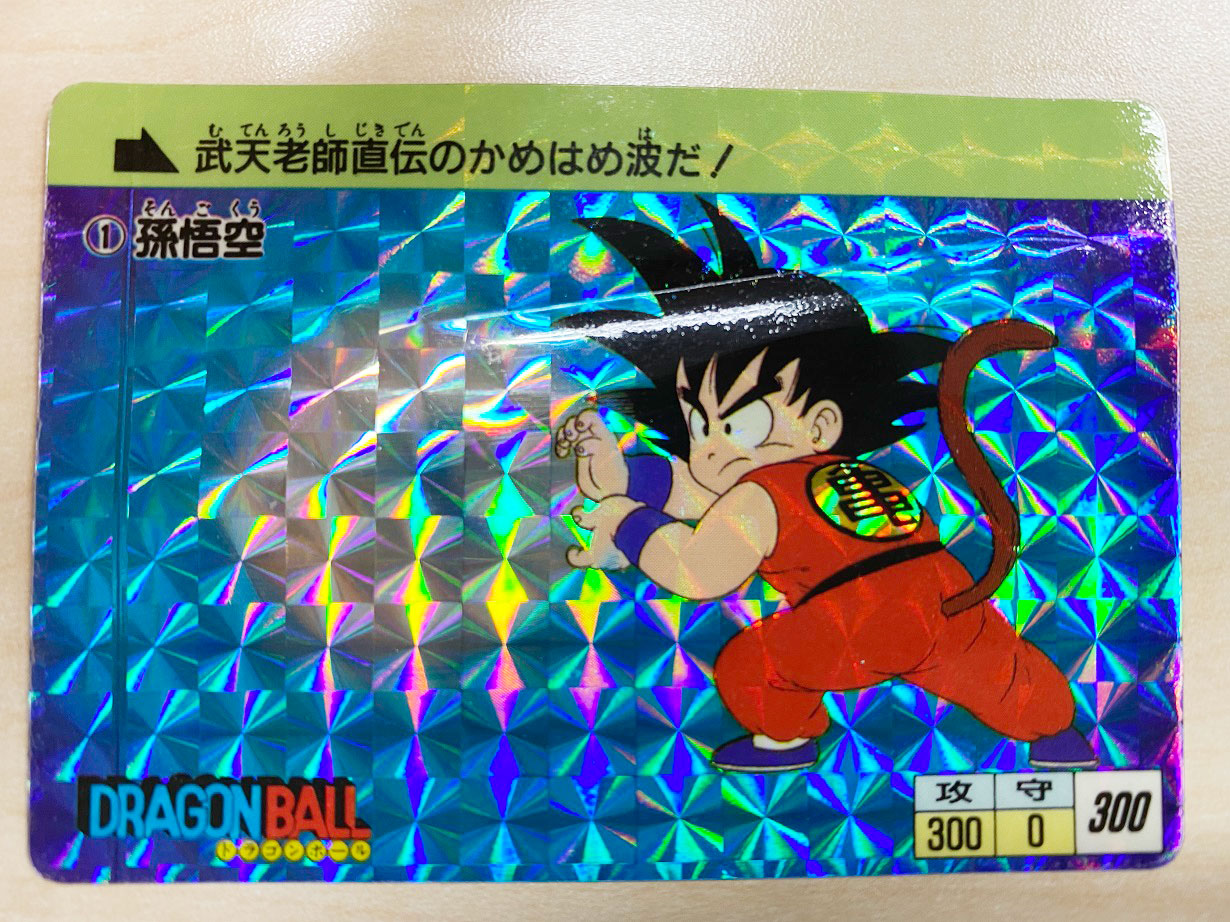
—So with Carddass existing somewhere between the serialization of the manga and the release of the anime, how did you go about creating the cards?
Takaaki: We'd wait, often into the depths of the night, with Jump's editing department for Toriyama's rough storyboard to be delivered, and as soon as we got it, we'd take a copy over to Toei Animation and get them to illustrate designs we could use for the cards.
The manga is almost all black and white, so of course we had to ask them to add color for the cards, but at that stage in production the official colors for the anime hadn't been decided. So there actually are some cards whose colors differ from the anime. At the time, Carddass was kind enough to overlook discrepancies in the colors, but in the latter portion of the card series' run, we really wanted to please the fans, so there were times where we'd wait to release cards until the character had appeared in the anime.
—Let me take things back even further for a moment. I heard that the predecessor to Carddass is actually the Gashapon. How did the idea for a vending machine that sells cards originate?
Takaaki: Back then, monochrome vinyl figures (100 yen) were Gashapon's bread and butter, but the stickers that came free seemed to be really popular. So the idea came around to sell just the stickers for 20 yen each. That way, kids would be able to afford to buy them every day. This was back during the economic bubble, so I've heard that there was some inside opposition to the idea of trying to turn a profit from selling them at 20 yen each, but I've also heard that, in the end, the prevailing opinion was that if customers are expected to build a whole collection of them, then the individual cost should be kept low.
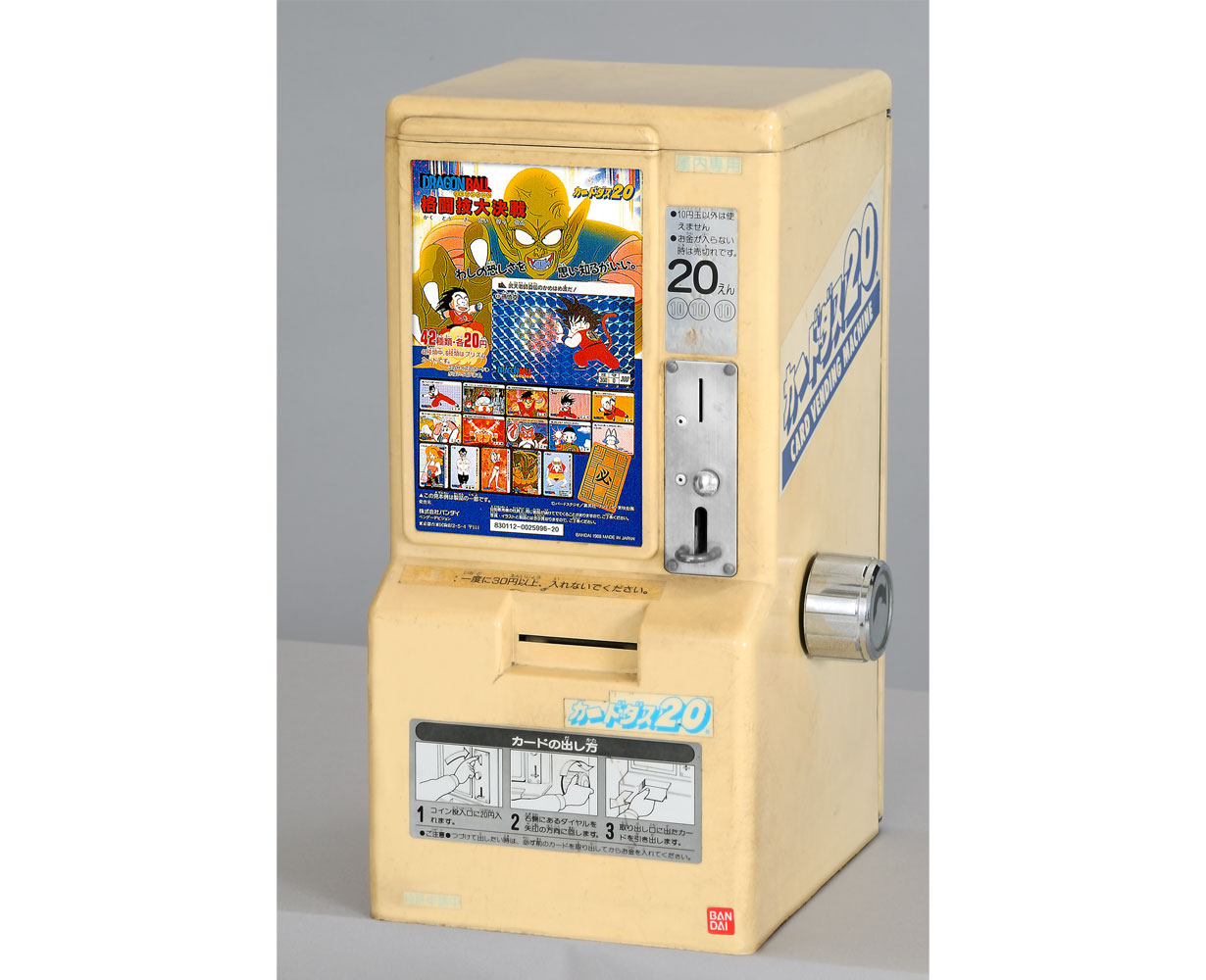
Takaaki: Carddass was created by Makoto Shibasaki, who currently works as a special consultant for Bandai. The story goes that he did it all with the help of just one member of the development team who was only in their second year at the company. I heard that, starting out, they didn't have many reference illustrations to work with and that they only had around three months from the time the project got the go ahead to when it released.
Some people may know this already, but the name "Carddass" was inspired by "AMeDAS"—an automated system for gathering weather data. It was hoped that Carddass would serve as a sort of information hub for kids.
Wataru: There were lots of Dragon Ball toys on the market, but if you look at the long-term sales figures, cards were the source of over half of them. It got to the point where "Carddass" and "Dragon Ball goods" became all but synonymous.
The yearly sales figures for Carddass back then are roughly equivalent to those for Dragon Ball Heroes (100 yen per play) today. But what you have to consider is that each card cost only 20 yen, so the number of kids buying them was huge. I think it's fair to say Carddass was a complete sensation.
—Dragon Ball Carddass' Prism cards, or "Kira cards" as they were often known, provided me with so much excitement as a child. How did you decided which scenes or characters would be made into Prism cards?
Takaaki: I guess it just came down to what illustrations looked the best as shiny cards. There were times where you'd take one look at Toriyama's rough storyboard illustrations and instantly know. Two good examples would be Super Saiyan 3 Goku (Set 20, Card No.154) and Super Saiyan Gotenks (Set 21, Card No.172). As soon as it was decided which of their panels in the rough storyboards would be made into cards, it was practically a done deal that they'd be made into Prism cards.
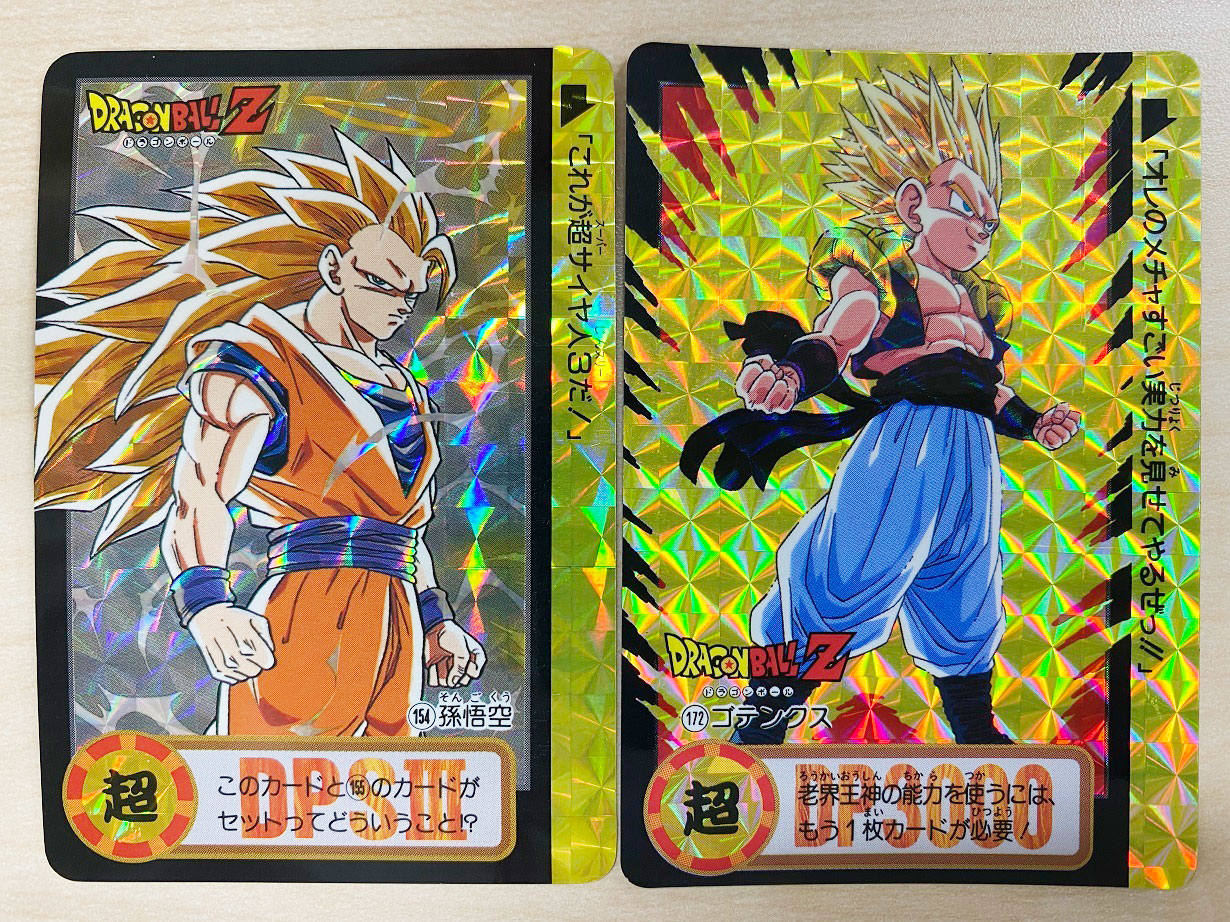
Takaaki: In the anime, those panels get turned into a series of illustrations to make a scene, but in card form, you can preserve that one awesome pose forever as a part of your collection. Whether or not a given image was worthy of preserving was always a big factor. Also, when it came to characters that would end up being the highlight of a set or cards that already had something special about them, we would often ask ourselves whether it would even be worth making them a Prism card.
Yoshito: There are tons of cool effects in the Dragon Ball movies and anime, so the series was well suited to incorporating shiny cards. By the way, Takaaki, Carddass also had Double Kira (Double Prism) cards too, right? Like, they were shiny, but when you peeled off a layer, there was another Kira underneath. I actually had one back when I was in pre-school, and it was my most prized possession! What was the thought behind creating them?
Takaaki: They actually came around because the printing company we were using told us, "Hey, we can do this, you know." They were first introduced with the 12th set, so right around the time I became the project leader. We also had cards that were shiny on the front and back. It's worth pointing out that, for the main Dragon Ball series, we were selling a lot of cards, which meant we could easily cover the extra cost associated with using slightly fancier printing techniques.
Yoshito: Ahh, that makes a lot of sense.
We use a variety of ways to signify different rarities in Dragon Ball Heroes. We've got the original holofoil designs, plus, there are loads of different ways we use gold foil. I'm confident in saying Dragon Ball Heroes is the card game that's most specific about its design choices in the world.
—For Heroes, it must be really important to balance the pull rate of the rare cards with their strength in the game.
Yoshito: It definitely is. We actually worked backwards to establish the rarity levels by first asking ourselves how excited we want players to be when they pull a card of a certain rarity. At the time, kids were averaging 5 plays on the arcade machines per session, so we adjusted the rare-card pull rate so that they could get one rare card per visit to the game center. No matter what, the rare cards are always going to be at the heart of any series.
In the world of trading card games, when you're opening packs, it's common to see the rare cards as good pulls and overlook the others, but we want people to value those cards too. That's why we put out some really strong cards with lower rarities and why we put so much effort into making sure all of the cards look super cool.
—What do you think about when it comes to producing cards for an overseas player base?
Yoshito: In America and Europe, there isn't as much media coverage of Dragon Ball as there is in Japan, so we approach it hoping that people will discover a love of Dragon Ball using the cards as an entry point to the franchise. As a personal example, I came to like Gundam as a result of first playing the Gundam War card game.
—With the foreign fans, what aspects of Dragon Ball do you feel they find the most appealing?
Yoshito: We're still in the process of figuring that out, but I think it's got to be how easy to understand the series is. That comes down to the story being relatively straightforward as well as the wealth of memorable and lovable characters. Plus, with the strength of all the characters being clearly defined, the recurring theme of striving to become the strongest of all is easy to get a grasp of.
Regarding the USA specifically, the concept of a "special move" doesn't show up much in their media, so I think that having a special move like the Kamehameha that's so easy to try for yourself really contributed to the series' success over there.
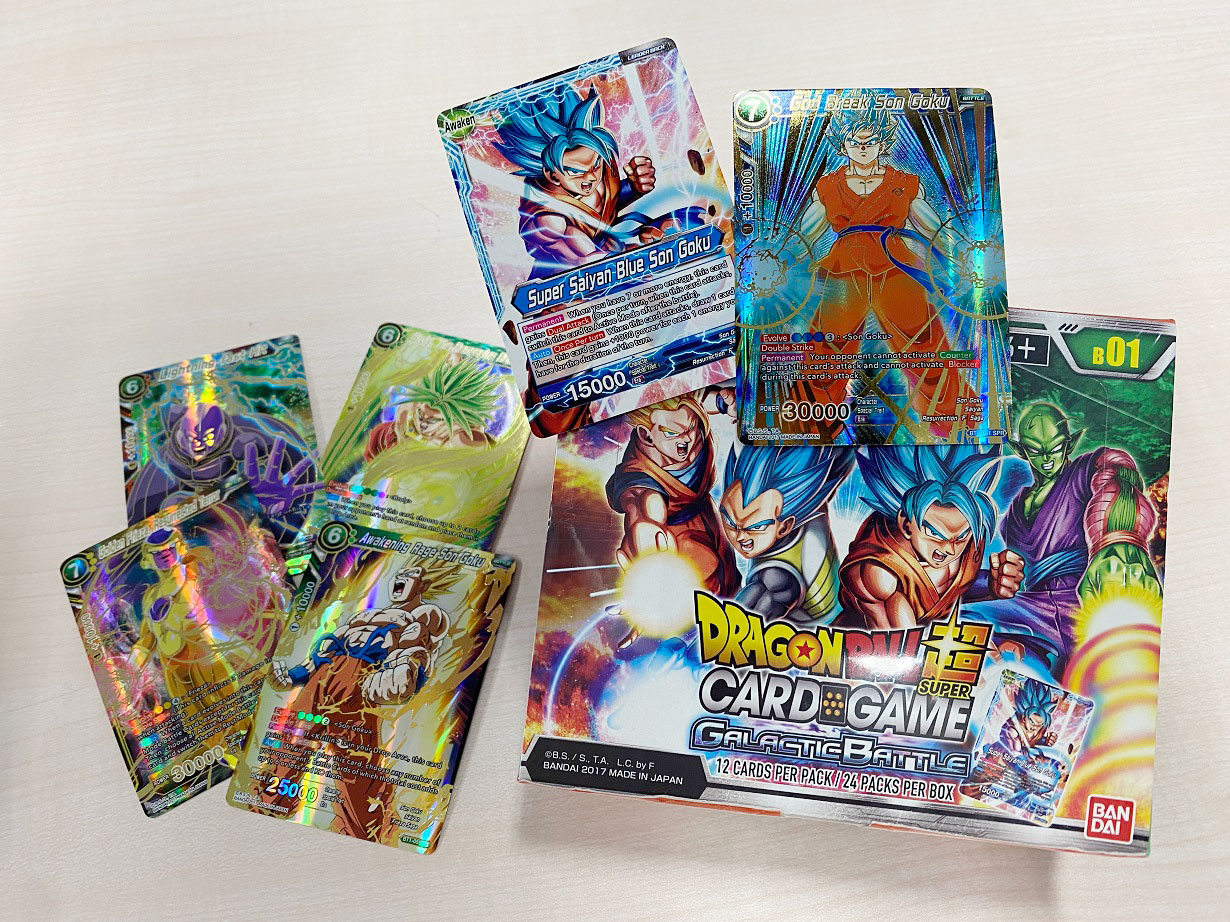
—During this last year or two, the coronavirus pandemic has really restricted kids from being able to meet up with their friends and play outside. With the situation as it is, can you tell me a little bit about what marketing tactics and future plans you have for the Dragon Ball card games?
Wataru: In Japan, we haven't been able to put on tournaments with large numbers of people. We value all our young players, but they simply can't get to the stores in person as frequently as they could before.
But there's no escaping the fact that a lot of the joy of card games comes from playing with other people. For now, all we can do is to find ways to organize tournaments that don't require so many people to gather in the same place to ensure that everyone can play in a safe environment. We're also considering beginning preparations for when we can finally start holding large-scale tournaments at stores again. For players overseas, we're putting a lot of effort into establishing ways to play online.
Yoshito: That's right. There's no Data Carddass abroad (excluding Asia), so trading card games are the norm. The USA and Europe has had infrastructure geared towards people working remotely for some time now, so dedicated players have been playing against each other online by attaching cameras to their PCs to show their cards since before the pandemic.
Combining this way of playing without the need to meet in real life and the pandemic restricting everyone's ability to go outside, it seems people have been really enjoying playing card games from their own homes. I feel like, due to the pandemic, card games have been reevaluated and are now being seen as a hobby you can even enjoy from the comfort of your own home.
—Is the culture of playing card games online also starting to appear in Japan?
Yoshito: The online communication tool that's widely used in the USA and Europe, Discord, is now common in Japan, and all the card game companies are working on their own versions of online battle arenas. Bandai is currently developing the "Bandai TCG Online Lobby" and "BANDAI TCG CONNECT" so that players will be able to battle it out online in all their favorite card games.
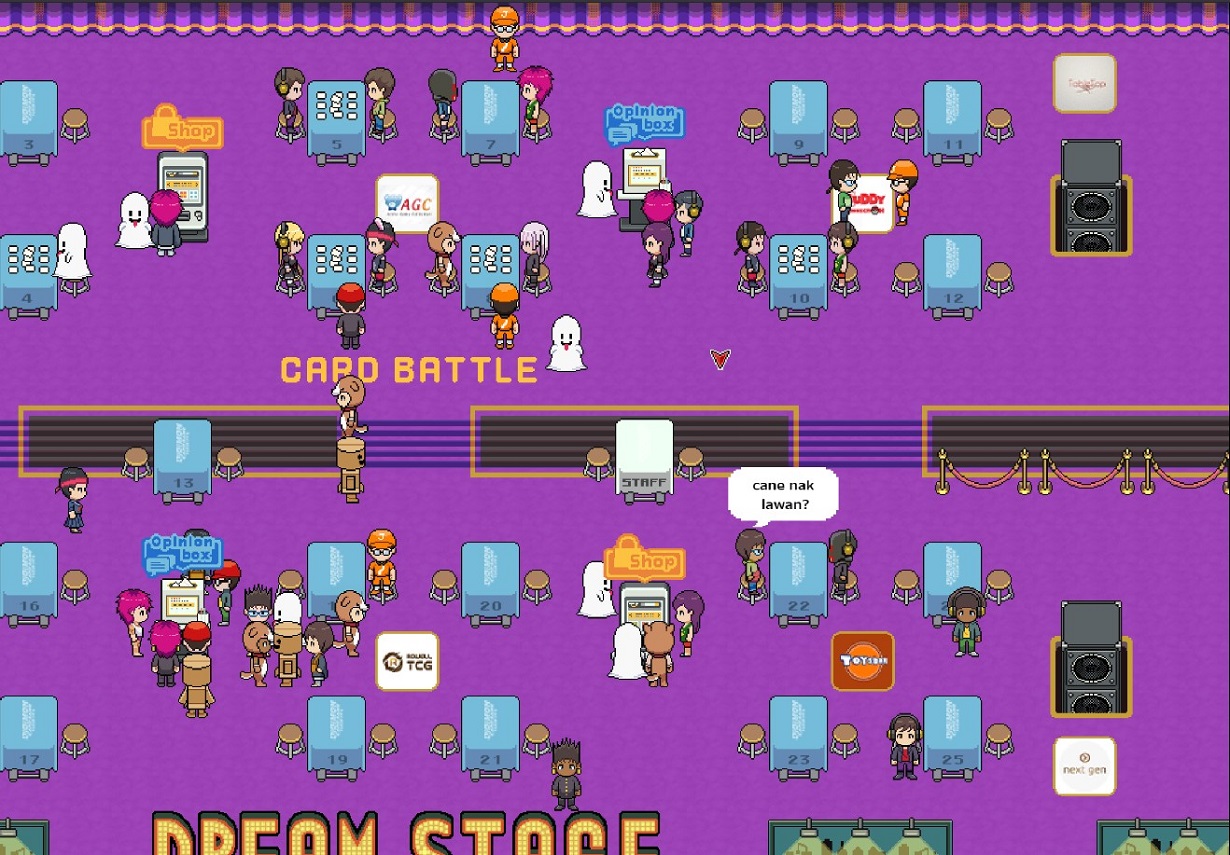
BANDAI TCG CONNECT online lobby screen
—Dragon Ball has a long history, but Dragon Ball cards have been a part of that history for over 30 years now. The way that the cards have never fallen out of popularity over such a long period really is amazing.
Takaaki: I know, right. The series and the card games are inseparable.
After the manga serialization ended, we held Carddass events all over the country to help promote the upcoming Dragon Ball GT anime. What really struck me during the events was how loved not only the Dragon Ball series was but also the cards.
However, there was actually a period where card production stopped. In September 1997, Dragon Ball Carddass briefly came to an end. I'd looked at other franchises' Carddass series and seen that, despite having been hugely popular, they'd fallen into decline. I really didn't want Dragon Ball Carddass to follow that same pattern, so I thought it would be best to end it while it was still going strong and trust that the next generation would enjoy everything we'd put out until that point.
Wataru: When there's a break in production like that, it's almost impossible to start up again and regain popularity. It was really all thanks to the young fans that Dragon Ball was able to pull it off.
—What do you mean by that?
Wataru: From 2003, Dragon Ball started regaining a lot of popularity with the release of things like DVD boxsets and PlayStation 2 games, particularly among adults, who were rediscovering the series having been huge Dragon Ball fans as children. In contrast, there were a lot of kids then who'd never had a chance to experience Dragon Ball and didn't even know the series existed. Or so we thought...!
We eventually realized that the younger generation had been renting Dragon Ball videos and watching rebroadcasts of old episodes the whole time. In addition to that, there was a certain card-based arcade game at the time that kids were going crazy over. Even the small game corners at supermarkets were swarmed with young fans.
—So that must've all been just before the release of Dragon Ball Heroes, right?
Wataru: It was indeed. Dragon Ball Heroes was released in 2010, amidst the renewed interest in Dragon Ball from adults and the surge in popularity of card games among kids.
The fact that it also coincided with the spread of shopping malls is also relevant. I personally refer to it as "mall culture", but at shopping malls, both kids and adults can visit the same stores, get a bite to eat, and just hang out together. I think the fact that people were choosing to spend their money at malls in that way contributed to the emergence of parents and children enjoying arcade card games together.

Wataru: Back in the original Carddass days, kids would mostly hang out together at snack shops, where, of course, no adults were doing the same. But since the release of Data Carddass, it's become the norm for kids and adults to play together and, with the shopping mall being used as a place to coexist, the two generations have formed a really strong bond.
—It really was cards that brought together young and old fans. When I go to the supermarket, I also get taken over to the Heroes machine in the game corner by my kid! The first time I saw one, I remember thinking to myself, "Wow, it's Dragon Ball! I didn't know they had stuff like this!"
Yoshito: At the time when Takaaki was running things, Bandai's policy when it came to character merchandising was something along the lines of, "The anime broadcast is our main focus, so what's the fastest way we can create products alongside it?"
However, things are a little different now. Nowadays, anime is broadcast in a variety of ways, there are late night broadcasts past kids' bedtimes, seasons that are split into multiple parts with gaps in between, and so on. With that said, we're living in a time where, so long as there are enough loyal fans, content just keeps coming.
Wataru: The cards themselves have changed a lot over the years, but the way kids hang out, share information with each other, and discover new characters together is still exactly the same as when Carddass was just starting out.
It's as if that goal of becoming an "information hub for kids" hasn't changed a bit over the last 30 years. Recently, I've been feeling more and more grateful to those that came before us. They really laid the groundwork for us to be able to work with Dragon Ball today.
Takaaki: When I was project leader for Carddass, Dragon Ball characters were figures to be aspired to. Now, with Dragon Ball Heroes, you can play alongside them as you control your Hero. I think in that way, the relationship between users and the characters as well as the way fans enjoy the series will change as Dragon Ball continues its run as a beloved franchise into the future.
In the entertainment industry in Japan—and around the world—the influence fans have over their favorite series is getting stronger and stronger. Somewhere among all that is Dragon Ball, a juggernaut of a franchise that lets you set your expectations high and get excited just by hearing the name. With the help of the fans, I'm sure Dragon Ball is going to live on forever!
—As a fan of the series, I hope that Dragon Ball can continue uniting the generations and continue being celebrated for many years to come.
Thank you all so much for what was a truly fascinating conversation!
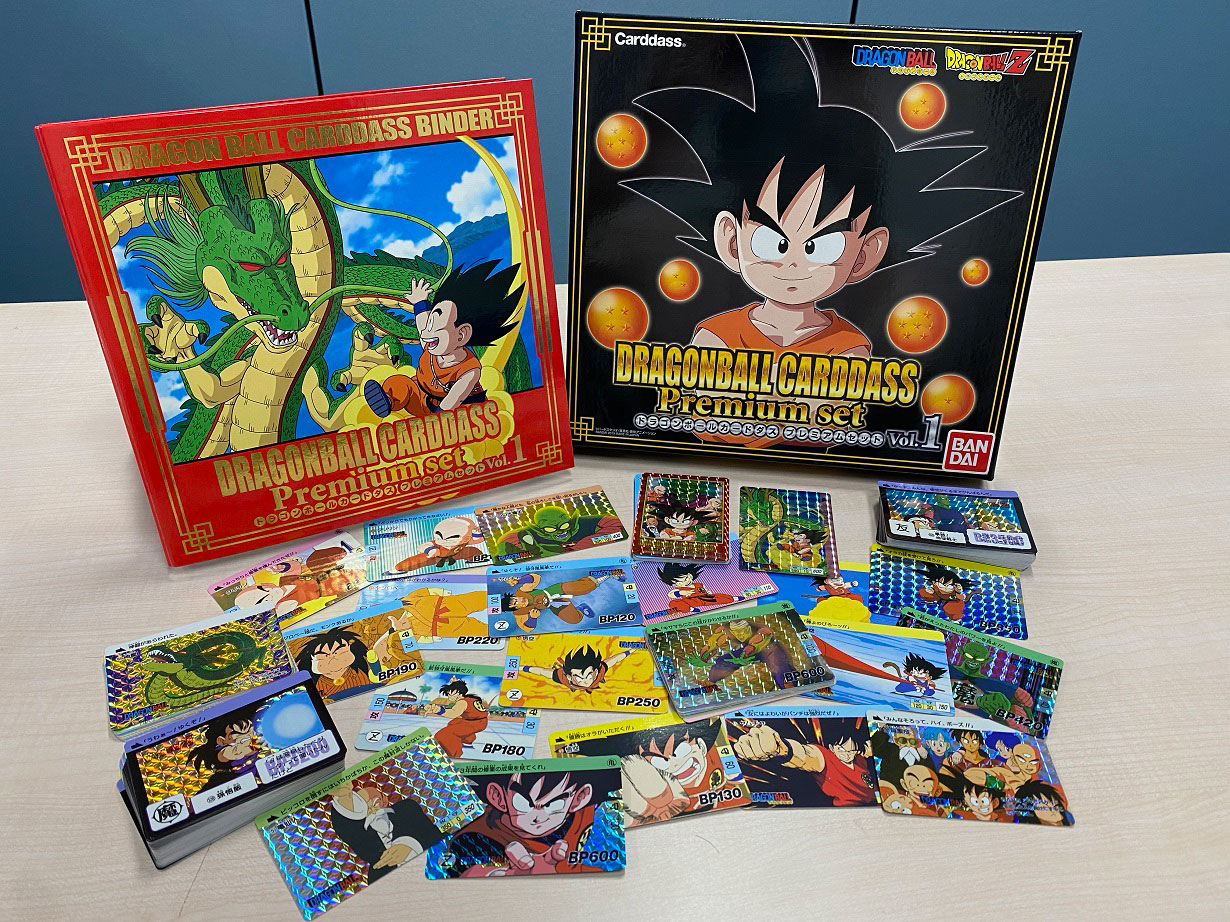
This site includes machine-translated texts. Please be aware that you might find some unusual expressions that are difficult to understand.
Post
Confirm Post
Post the above comment?
Reply
Confirm Reply
Post the above comment?
Are you sure you want to delete this comment?
Report successful
Post Unsuccessful
This user will be muted.
You will be unable to see comments from muted users in the comments area.
*To unmute users, navigate to the "Comments" area on MY PAGE.
Reply
Confirm Reply
Post the above comment?
Edit
Post
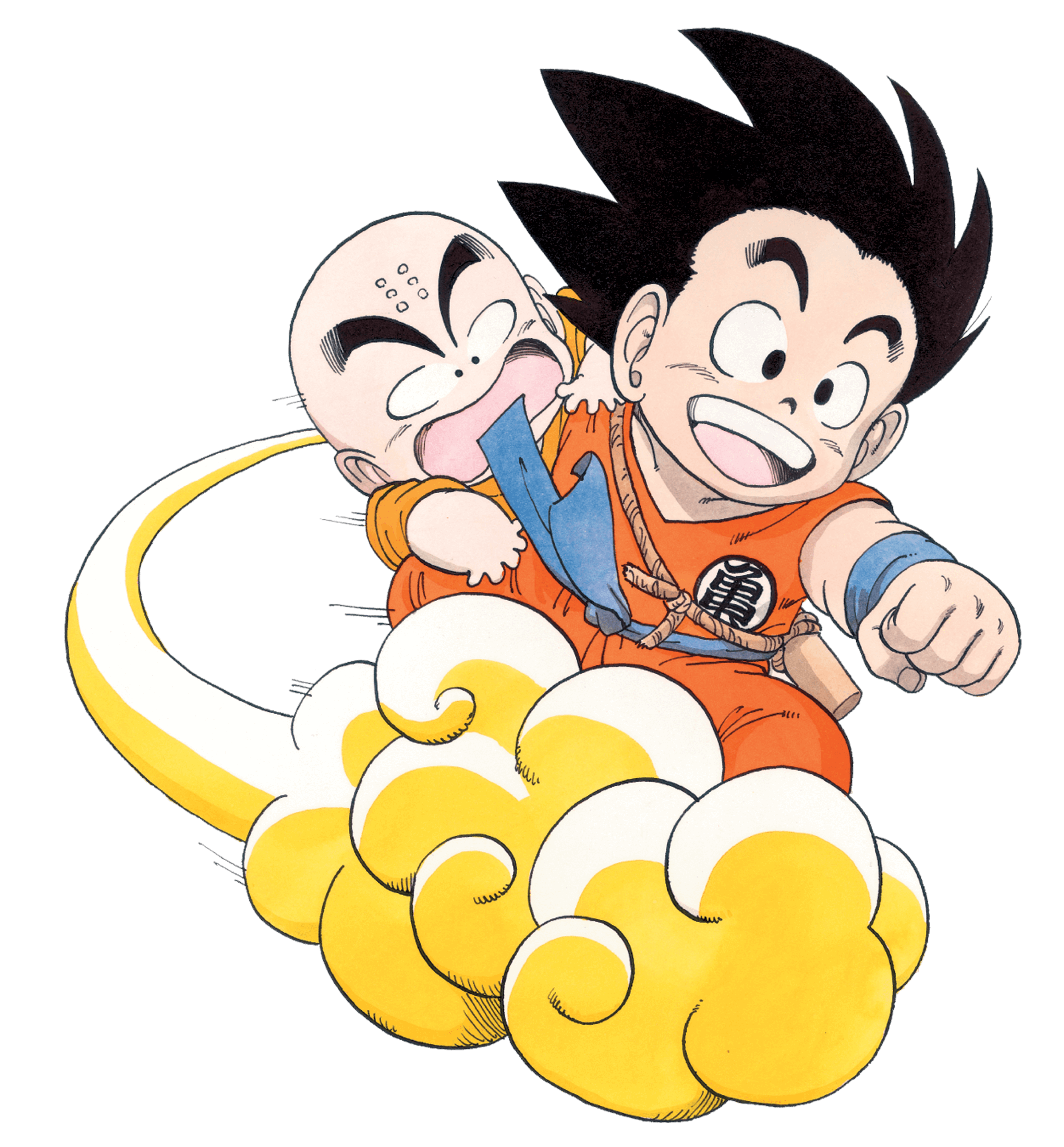

Post
Confirm Post
Post the above comment?
Edit
Post